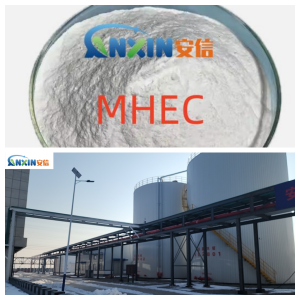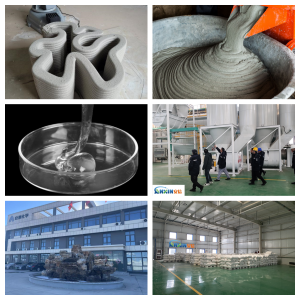Methyl hydroxyethyl cellulose (MHEC) is a water-soluble polymer widely used in building materials, coatings, adhesives, and other industries. It primarily serves to thicken, retain moisture, and improve workability. Understanding its raw material composition helps assess product quality and performance.
1. Basic Concepts of MHEC
MHEC is a nonionic cellulose ether made from natural cellulose through a series of chemical modification reactions. It exhibits excellent water solubility and thickening properties, and is stable under varying pH conditions. Therefore, it is widely used in products such as dry-mix mortar, tile adhesives, putty powder, and coatings.
2. Raw Material Composition of MHEC
MHEC is primarily derived from natural plant cellulose, produced through multiple chemical treatments. Core raw materials include the following:
2.1. Natural Cellulose
Source: Wood pulp or cotton pulp
Function: Serves as the backbone of MHEC, forming the basic framework of the entire molecule. Cellulose is a natural polymer compound rich in hydroxyl groups, which can be etherified.
2.2. Methylation Reagent
Commonly Used Chemical: Methyl Chloroethane (CH₃Cl)
Function: Under alkaline conditions, it undergoes an etherification reaction with the hydroxyl groups on the cellulose molecules, introducing methyl substituents. This increases the hydrophobicity and solubility of MHEC, improving its dissolution rate and salt tolerance.
2.3. Hydroxyethylation Reagent
Commonly Used Chemical: Ethylene Oxide (C₂H₄O)
Function: It undergoes an etherification reaction with the hydroxyl groups on the cellulose molecules, introducing hydroxyethyl groups. This enhances the hydrophilicity, water retention, and adhesion of MHEC, enabling good workability in mortars and adhesives.
2.4. Alkaline Catalyst
Commonly Used Chemical: Sodium Hydroxide (NaOH)
Function: It provides an alkaline environment, activating the cellulose molecules and facilitating the etherification reaction.
2.5. Solvents and Auxiliary Agents
Commonly Used Substances: Methanol, Isopropyl Alcohol, etc.
Function: It serves as a medium during the reaction, helping to fully mix the raw materials, controlling the degree of substitution and reaction temperature, and ensuring stable MHEC performance.
3. Brief Description of MHEC Preparation Process
Alkalinization: Natural cellulose is treated with sodium hydroxide to loosen its molecular structure and facilitate the etherification reaction.
Etherification: Methylation and hydroxyethylation reagents are added to replace the hydroxyl groups on the cellulose molecules, producing methylhydroxyethyl cellulose.
Neutralization and Washing: After the reaction is completed, the residual alkali solution is neutralized with acid, and unreacted impurities are removed by washing.
Drying and Pulverization: The wet MHEC is dried and pulverized into a powder to obtain the final product.
4. Impact of Raw Materials on MHEC Properties
Cellulose purity: Determines the stability and solubility of the final product.
Degree of methyl and hydroxyethyl substitution: Affects the thickening properties, water retention, and dissolution rate of MHEC.
Catalyst and solvent selection: Directly influences reaction uniformity and product quality.
5. Applications
Due to its excellent water retention and workability, MHEC is widely used in:
Dry-mix mortar (improves workability and water retention);
Tile adhesive (enhances bonding properties);
Putty powder (improves fluidity during application);
Coatings (as a thickener and stabilizer)
Post time: Aug-06-2025

